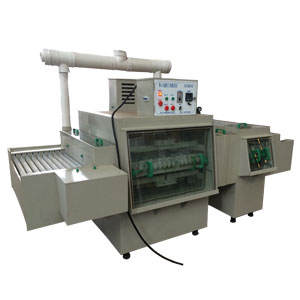In ancient times, the application of chemical etching machine technology was a kind of accident. On one day, people accidentally spilled acid on the metal and found that the acid could bite off the spilled place, and the bitten place and the place that was not bitten off. A three-dimensional feeling. Then people carefully record this situation. Subsequently, it was discovered that the strong acid type of extreme acid, that is, the anti-corrosive substance, has been gradually applied to real life through continuous experiment and improvement, bringing great convenience to people's life.
Around the 15th century, people mainly applied the etching machine technology to the processing of armor, and the craftsmen who made the armor put some anti-corrosion material maps on the surface of the workpiece. It can be used for marking as well as for preventing corrosion. It is also possible that the rust spots formed by the damage of these protective layers play a role in marking, so that people have been inspired to improve and slowly master the etching machine technology. The patterns on the armor, helmets, weapons and other armor were difficult to do by hand-engraving. People only sought to process them quickly and easily. Through continuous experiments, it was found that acid can corrode metals and found It can resist acid and anti-corrosion materials, and finally use chemical corrosion process in the production of armor patterns.
Regarding the use of the etching machine technology on metals, the earliest written record appeared on 15 actual British manuscripts, which described an etching machine technology solution with salt, activated carbon and vinegar, and a The coating consisting of linseed oil acts as a protective layer. During processing, the anti-etching machine technology material is first coated with the pattern of the protection zone according to the finished workpiece pattern, and the metal in the exposed area is bitten off by the acid. In the future, a layer of advanced paraffin wax and natural resin is used as a protective layer. When using this method, it is necessary to apply paraffin wax on the whole material and then scrape off the paraffin which needs to be carved and corroded. This is the origin of step chemical corrosion or shape corrosion processing.
The possibility of using one liquid to eliminate one or more metallic materials depends first and foremost on the efficacy of the compound, that is to say the corrosive nature of the compound. Only the corrosion of this compound is strong enough to be used as a chemical raw material for the etching machine technology. It is also known from this that the major developments in chemical corrosion are due to the direct development of chemical etching machine technology solutions. In addition, the second decisive role is the discovery and development of anti-corrosion materials, because it controls our targeted local corrosion on the same metal to truly produce the products we need, so the protective materials are very important. Since the corrosion processing technology, the protection technology and the corrosion process have always been the pipe fittings that guarantee the quality of the processing. .
In ancient times, technicians engaged in corrosion processing did not have many methods to transfer images to metal surfaces that needed corrosion. The earliest method may be the use of some paraffin, rosin, asphalt, etc., and may also use natural organic materials such as beeswax and tung oil. According to the records of the craftsmen who specialized in corrosion processing in the 16th century, it takes several weeks or even months to patiently smash these materials in a certain proportion and then blend them with liquid asphalt or tung oil. It may also be direct. It is heated and melted to form a protective coating. Then carefully apply the protective coating to the surface of the entire part to be corroded with a brush, after hardening by cooling or cooling; then use a hard object such as a needle or a scraper to make the pattern on the protective layer, and then use the original The method is subjected to corrosion processing. We can imagine how they built a barrier around the corrosive part with a natural room temperature solid resin such as paraffin, and then slowly added the acid to the area to be corroded. We can estimate the difficulties that these artisans specializing in corrosion will encounter. For example, the adhesion of the anti-corrosion layer is not enough. When the corrosion depth is not reached, the anti-corrosion layer may fall off in whole or in part. It needs to be polished by hand to remove all corrosion burn marks; the anti-corrosion wall built with natural resin such as paraffin does not prevent the acid from overflowing, causing corrosion of the outer edge or other parts of the parts. Parts are machined before they are corroded, and they are already of great value and are therefore at great risk. With the development of other auxiliary technologies and organic materials, it is possible to make large containers from non-metallic materials, and at the same time, gradually grasp the comprehensive protection of other parts of the parts by using anti-corrosion coatings, and then the parts can be directly immersed. .




